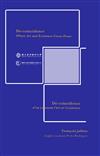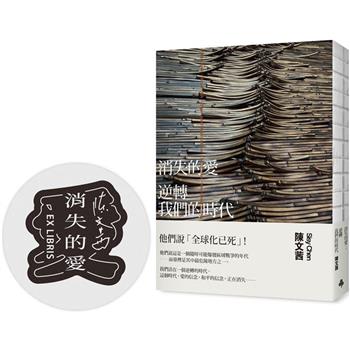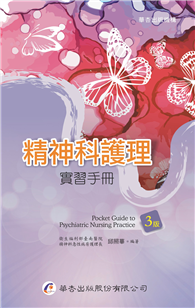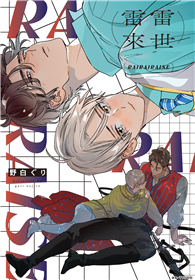| FindBook |
有 4 項符合
DE-COINCIDENCE:Where Art and Existence Come From的圖書 |
 |
DE-COINCIDENCE:Where Art and Existence Come From 作者:François Jullien / 譯者:Pedro Rodríguez 出版社:開學文化事業股份有限公司 出版日期:2018-08-03 語言:繁體書 |
| 圖書選購 |
| 型式 | 價格 | 供應商 | 所屬目錄 | 二手書 |
$ 110 |
二手中文書 |
$ 225 |
社會人文 |
$ 232 |
中文書 |
$ 233 |
藝術總論 |
|---|
| 圖書館借閱 |
| 國家圖書館 | 全國圖書書目資訊網 | 國立公共資訊圖書館 | 電子書服務平台 | MetaCat 跨館整合查詢 |
| 臺北市立圖書館 | 新北市立圖書館 | 基隆市公共圖書館 | 桃園市立圖書館 | 新竹縣公共圖書館 |
| 苗栗縣立圖書館 | 臺中市立圖書館 | 彰化縣公共圖書館 | 南投縣文化局 | 雲林縣公共圖書館 |
| 嘉義縣圖書館 | 臺南市立圖書館 | 高雄市立圖書館 | 屏東縣公共圖書館 | 宜蘭縣公共圖書館 |
| 花蓮縣文化局 | 臺東縣文化處 |
|
|
40多年來,法國哲學家、希臘學學家和漢學家朱利安(François Jullien),運用了中國語言的思想資源,重新審思並拓展歐洲思想。迄今,他出版了40多本論著,這些書已被譯成25種語言。他所建構的哲思概念已在法國、歐洲以及歐洲域外產生影響,不僅在思想領域,也在其他領域:藝術創作、企業管理、精神分析等等……引發了眾多迴響。
本書DE-COINCIDENCE《去相合》是他眾多哲學思想中的一個關鍵詞。此書含有英文翻譯版及法文原版。
De-coincidence
Where Art and Existence Come From
Two edges of the painting, along an oblique line, are unpainted (see the small painting done by a young Picasso in Barcelona). There are works of classical painting with areas left unpainted, but in this case the whole painting seems offset from its medium: it no longer coincides with the medium in the primary—geometric—sense of the term, where lines or surfaces align exactly when superimposed. In this painting we can detect a new possibility—as yet only hinted at—that begins to sap the whole edifice of what had come before in painting. The close-fitting adjunction, familiar and adequated, is undone, and in the undoing something unexpected and unthought-of surreptitiously emerges and comes to be. Such is the power of de-coincidence to unfurl.
Artists ever since have been methodically applying themselves to the enterprise of de-coincidence. They have striven to undo the capacity for coincidence that lies at the core of art's previous apparatus—and specifically of representation (the observance of shapes and proportions as well as the demands of perspective, the reproduction of colors, and anything that produces resemblance), which they denounce as an illusion. The purpose of the enterprise, however, is not merely to establish a rupture with the past, to break free from constraints and norms, to mark out deviance or assert dissent—i.e., to denounce an adequation that smacks of conformity. As a concept de-coincidence goes back further, to the origin of the écart that made modernity and elucidates it in its principle. This while demonstrating that "coinciding" (entering into complete adequation), although it satisfy and perhaps even amount to an exploit, is not viable and, at bottom, lacks exigency: it is at once fake and sterile. Thus de-coinciding returns our attention to, and legitimizes, the other meaning of coincidence: that of the purely adventitious encounter ("sheer coincidence"), the encounter with no apparent justification. In the play (jeu) of this single term's opposite meanings—the fortuitous or the adequated, the accidental or the adapted—can we not discern the very possibility, the more primal possibility, from which art and existence come to us?
De-coincidence undoes the enterprise of coincidence on which classical art rests (did perhaps the great painters of the past not have a secret sense of such a de-coincidence and its exigencies?), but a parallel de-coincidence just as thoroughly undoes the ontological enterprise that establishes truth as adequation (between "thing" and "mind"). Or, indeed, undoes the moral of wisdom: living "in conformity with nature." Modernity founds itself on this new suspicion that there is no "nature" or Being to serve as possible substructure and foundational order anymore. To de-coincide, however, is to open an écart with respect to a congruity that brooks no further latitude or initiative; it is to extricate oneself from an order that, in its fulfillment, inhibits its possibles and sterilizes. Coincidence is death. To coincide is to bog down, whereas to de-coincide is to promouvoir (elevate and valorize) and dégager (extricate, extend, and develop).
What elevated (s'est promu) as "man" had already de-coincided with previous animal forms (with other "hominids") by introducing an écart with respect to their preceding adaptation (by "ex-aptation," one might say). Whereas coinciding buries the possibility of consciousness, it is, on the contrary, by de-coinciding that consciousness can, by dis-adhering, break free and unfurl its capacity. (Zen too makes use of this effect.) Or, in still other words, the subject elevates by de-coinciding with its integration in a world. If to ex-ist is precisely to "opt to remain outside," then what one remains outside of is, first of all, the coincidence that constitutes the world. It is because they have been exiled from the perfect coincidence of terrestrial paradise that Adam and Eve can begin to exist as subjects and gain access to a History. If "man alone ex-ists," he does so insofar as he can de-coincide with the world and thereby introduce a margin of initiative or liberty. This de-coincidence is something art is duty-bound not so much to express as to activate.
「去相合」藝術與暢活從何而來
在兩邊上,隨著一條不明顯的線,這張圖並沒畫(請看年輕的畢卡索在巴塞隆納所畫的那張小圖)。在歐洲以前的繪畫當中已經有畫家留下沒畫的部分。然而這一次,整幅圖畫相較於它的畫布,顯得有落差:因為按照相合最初的——幾何——定義,線條或者表面是完全恰合的,但是這圖畫不再與畫布相合了(ne coïncide plus)。此處就還相當含蓄地透露了一種新的可能性,使之前的整座繪畫建築物開始衰弱:期待中的合宜銜接被拆解了,某種沒構想的意料之外的東西含蓄地湧現而存在。这就是「去相合」(dé-coïncidence)要開展的大能。
藝術家自此之後就堅持地實踐「去相合」。他們致力拆解「相合」力(coïncidence),這種相合力之前是藝術構作的核心,而首先就拆解「再現」的構作之相合力,揭發「再現」的構作是幻象:尊重形式和比例﹑透視法的要求﹑色彩之再造和一切產生相似的。然而,那不只是導入一個斷裂,從限制和規範裡自我解放出來,做出偏航或者確認某種異議;就是說,那不在於揭發某種因被懷疑是循規蹈矩的「相等」(adéquation)。「去相合」確實是一種上溯到更靠近製造了現代性的「湧距」(l’écart)出發之處的概念,並且在「湧距」的原則上照明了「湧距」。那凸顯出進入完美相等的「相合」是令人滿意的,甚至可以是一項英雄偉蹟;但是行不通的並且究竟是缺乏嚴謹要求的,「相合」既是矯作的也是毫無孕育力的。由此,「去相合」讓人重新聽見「coïncidence」的另一個意思,並且給予它合理性:純偶然的巧遇(「純偶遇」)而且沒有任何事物似乎可證明其合理性。在「coïncidence」那兩種相反的意思──偶遇或符合,偶然的或調整順應的──所打開的「間遊」(le jeu)當中,我們難道沒偵察出那產生藝術與暢活(existence)的更原初的可能性嗎?
正如「去相合」拆解了歐洲以前的藝術賴以建立(並且憩於其上)的「相合」(不過,偉大的畫家們倒是暗地裡感覺到「去相合」及其嚴謹要求,不是嗎?),「去相合」也同樣地拆解了那把真理看作(「物」與「心」)相等的本體論的工作。「去相合」還拆解了「順從大自然而生活」這種聖人之道的道德。現代性的確就安營在這個新起的懷疑之上,就是不再有「大自然」或「存有」作為可能載體和根本秩序。與之不同的,「去相合」乃針對一個不再具有「間遊」和「主動性」的合宜性,打開「湧距」;這是從一種井然有序當中抽身出來,該井然有序因填滿自己而阻擋了多種可能性並且造成貧瘠。相合就是死亡:相合是沈溺萎縮(enlisement),「去相合」反倒是推動(promotion)與脫展(dégagement)。
那提升為「人」者,早已與人的動物性(「人科」hominidés)從前的種種表現形式有了「去相合」,而且在面對他們之前的調適時(我們也許可以說通過「脫除調適」« ex-aptation »)導入了「湧距」。相合埋藏了人有意識的可能性,與之相反的,人的意識乃因「去相合」而能夠通過除掉附著去開拓它的能力──「禪」也運用這種作用。或者換個說法,那是經由與他所整合入的世界「去相合」來自我推動的主體。如果「ex-ister」正表示「挺身於……之外」(« se tenir hors »),它首先就表示挺身於形成世界的相合之外,亞當和夏娃正是因為被放逐而走出了地上樂園那完美相合的秩序,才開始以作為主體存在並且才可能進入一個歷史過程。如果「只有人可以暢活」,這是只要人可以與世界「去相合」,為了在世界裡面導入主動性或自由的餘地。藝術的任務,不是表達而是實現「去相合」。
作者簡介:
François JULLIEN, philosopher, hellenist, and sinologist, is professor and chair of the Department of Oriental studies at Université Paris-Diderot and chair of alterity at the Fondation Maison des sciences de l’homme. He is one of contemporary philosophy's most widely translated thinkers.
朱利安是哲學家、希臘學學家暨漢學家,是巴黎迪特羅大學特級教授,也是巴黎人文之家基金會世界學研究院他者性講座教授。他是最常被翻譯成外文的當代思想家之一,其論著已經被譯成二十五種語文。
譯者簡介:
Pedro Rodríguez is a writer and translator. He was born and raised in Miami, lived for a while in New York City, and now lives in Paris with his wife and son. He likes music, stories, science, drawing, cities, wilderness, training, and walking.
佩德羅 羅狄力茲,專職作家與譯者。
出生並成長於邁阿密。短暫待過紐約,現與妻兒定居於巴黎。
他享受音樂 各種故事 科學 繪畫 城市 荒野 鍛鍊或僅單純地步行
I. Unsealing
II. The fortuitous or the adapted
III. To live is to de‐coincide
IV. In the beginning was de‐coincidence
V. From de‐coincidence springs awareness
VI. How the negative promotes existence
VII. For an ethics of de‐coincidence
VIII. The tomb of coincidence
IX. Modernity
- 作者: François Jullien 譯者: Pedro Rodríguez
- 出版社: 開學文化事業股份有限公司 出版日期:2018-08-03 ISBN/ISSN:9789869551991
- 語言:繁體中文 裝訂方式:平裝 頁數:296頁 開數:10.6x17.2cm
- 類別: 中文書> 藝術> 藝術總論
陶藝裝飾技法:示範銅、錳、鉻金屬氧化物展現粉、綠、紫、青銅色等色彩表現技法,挑戰裝飾新風格的珍貴之作
中國傳統色主題配色事典:71種經典傳統色+758種相關搭配色+732種配色方案
抵抗的原力:性別藝術與酷異美學的源起
日系暢銷配色公式:復古、極簡、可愛、前衛4大風格,學會日本成功商品的配色方程式
超圖解西洋藝術家事典
構圖的祕密:一招萬用!輕鬆掌握色彩、形狀、平衡、明暗對比、視線引導,從此再也沒有「好像哪裡不對勁」的作品,繪畫、攝影、設計都適用【暢銷紀念版】
把藝術變成動詞:教學藝術家塑造美好世界的神奇魔法
解讀日本設計大師:直擊專訪┼代表作品┼踩點資訊,定義日本設計15人
泰寮湄公河流域那伽美術調查:從文學到藝術的過程
|










